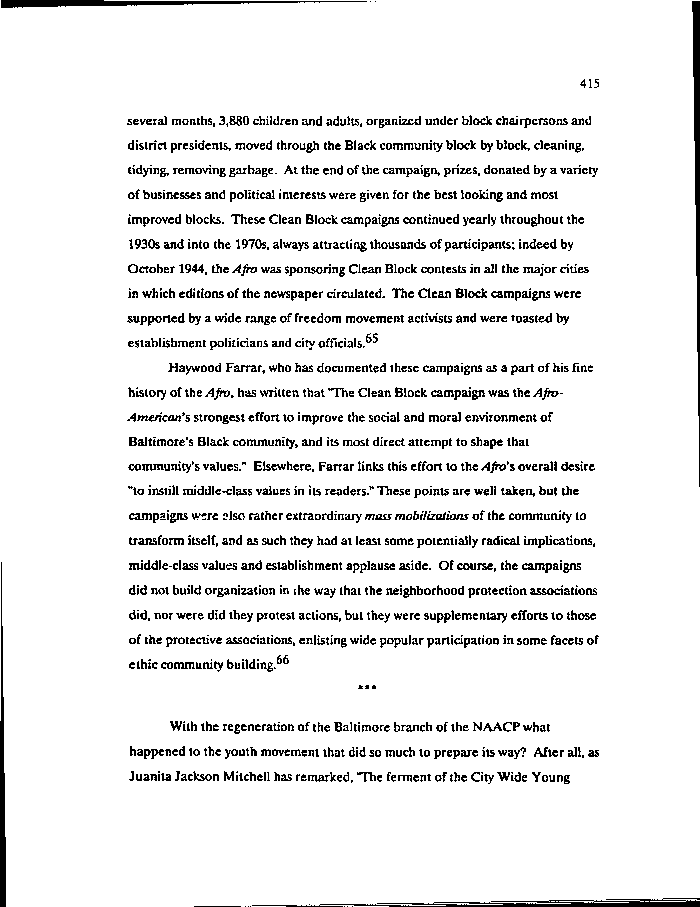|
415
several months, 3,880 children and adults, organized under block chairpersons and
district presidents, moved through the Black community block by block, cleaning,
tidying, removing garbage. At the end of the campaign, prizes, donated by a variety
of businesses and political interests were given for the best looking and most
improved blocks. These Clean Block campaigns continued yearly throughout the
1930s and into the 1970s, always attracting thousands of participants; indeed by
October 1944, the Afro was sponsoring Clean Block contests in all the major cities
in which editions of the newspaper circulated. The Clean Block campaigns were
supported by a wide range of freedom movement activists and were toasted by
establishment politicians and city officials.
Haywood Farrar, who has documented these campaigns as a pan of his fine
history of the Afro, has written that The Clean Block campaign was the Afro-
American's strongest effort to improve the social and moral environment of
Baltimore's Black community, and its most direct attempt to shape that
community's values." Elsewhere, Farrar links this effort to the Afro's overall desire
"to instill middle-class values in its readers." These points are well taken, but the
campaigns were else rather extraordinary mass mobilizations of the community to
transform itself, and as such they had at least some potentially radical implications,
middle-class values and establishment applause aside. Of course, the campaigns
did not build organization in the way that the neighborhood protection associations
did, nor were did they protest actions, but they were supplementary efforts to those
of the protective associations, enlisting wide popular participation in some facets of
ethic community building.™*
With the regeneration of the Baltimore branch of the NAACP what
happened to the youth movement that did so much to prepare its way? After all, as
Juanita Jackson Mitchell has remarked. The ferment of the City Wide Young
|

